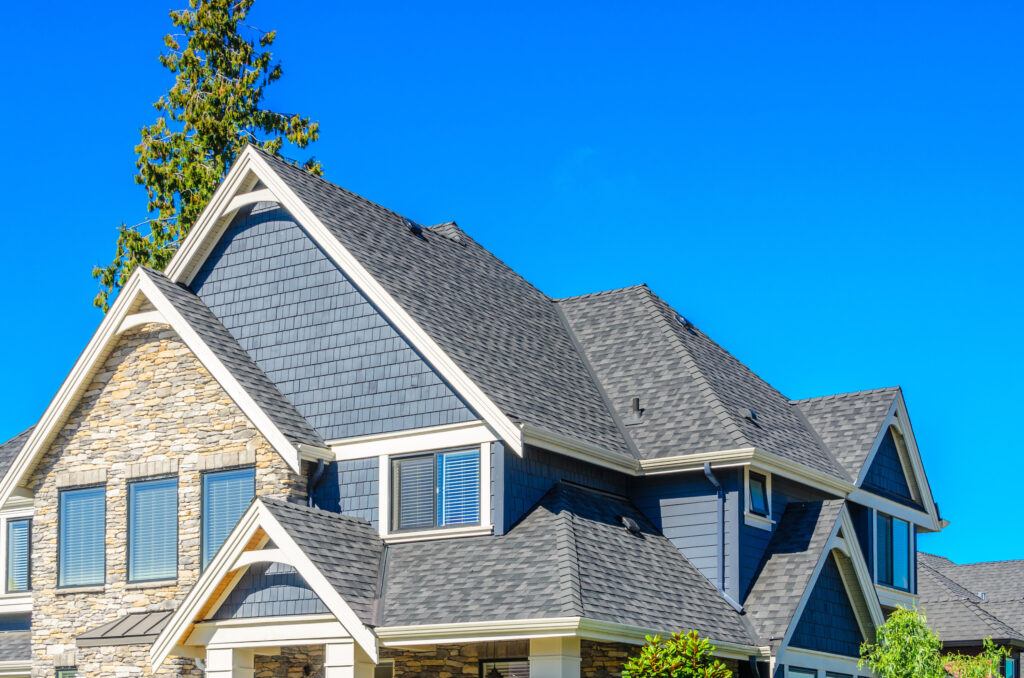If you’ve spent even a small amount of time looking at the possibilities for a new roof, you’ve likely seen just how many there are. For both residential and commercial roofs, there are myriad types and sub-types of roofs that have their own pros and cons. However, if you aren’t an expert in the field, you might not be able to parse through the jargon to find what’s right for you.
In this blog, we’ll offer a brief primer on the different types of residential roofing types, as well as what differentiates them for both the customer and the roofer installing them.
Asphalt Shingles
Asphalt shingles are the single most popular type of residential roof in the U.S., which is why we begin our blog with this type of roof. Asphalt roofs are by far the most popular in Cleveland as well, making up the bulk of the roofs we work with. For well over a century, asphalt shingles have been protecting American families.
Pros
Asphalt shingles are incredibly popular for both roofers and families because they are cheap and relatively easy to install. They also are pretty durable in places with moderate climates, and improvements in their design and construction have yielded energy-saving benefits over the many years.
Cons
Compared to other types of roofs, asphalt roofs don’t last that long. While an average of 15 – 20 years is pretty good, you can get longer longevity from other rooms. Asphalt roofs do also come with environmental concerns, as the runoff from asphalt has been shown to harm the environment in various ways.
All things considered, however, asphalt roofs are a solid choice for most homes in America.
Slate Shingles
Slate shingles are considered a slightly more complex type of shingle roof that is less popular than its asphalt counterpart. Slate shingles aren’t that common in the Midwest, typically being used more on the East Coast
Pros
Slate roofing comes with a slew of benefits over asphalt roofs. One of the best benefits is that they are incredibly durable and long-lasting because of their design. Slate is a heavy and durable material, so it proves very useful as a roofing material. Slate roofs also benefit from low maintenance, as well as simply looking fantastic.
Cons
One con for slate roofs is actually part of their durability as well: weight. Slate roofs can weigh up to 4 times as much as a similarly-sized asphalt roof. Slate roofs are also considerably more expensive than asphalt roofs, both in cost of material and in installation costs (in part because of weight and experience needed to install).
If you have the money and plan on staying in your home for 30+ years, slate roofing may be a great option for you.
Clay Tiling
Clay tiling is even less common in the Midwest than slate shingles, being much more common in the Southwest. Nevertheless, it is a popular residential roofing type that is used on millions of residential homes in the United States.
Pros
Clay tiling has a distinct aesthetic look that can make any home look great, but there is an abundance of function to boot. Clay tile roofs namely benefit from longevity, as a quality tile roof can last up to 70 years with quality maintenance and care.
Cons
Clay tiles have drawbacks in areas with variable weather, especially high winds. This is because variable weather can make the clay erode faster. They also don’t provide insulation that is as good as wood shingle, asphalt shingle, or even metal roofs.
Metal
Metal roofing is one of the fastest-growing types of roofs, and for good reason. Especially as the climate continues to change, metal roofs seem to be a great solution to an ever-changing construction environment.
Pros
If you want a roof that can last as long as possible, you’ll want to go with a metal roof. Depending on the type of metal and the maintenance/installation of the roof, metal roofs can last upwards of 50-70 years. Luckily, maintenance for a metal roof is typically much less than other roofs, and installation can be tricky but doable for an experienced team.
Metal roofs are also pretty light generally and are resistant to most extreme weather, especially high winds and fire.
Cons
One of the few cons for metal roofs is that they can be very expensive upfront. Of course, with their long lifespan, that investment will more than pay for itself over time. Yet, it is something to consider as you look at the different types of roofs for your home.
Contact Us Today For More Information!
If you’re looking for more information about the various types of roofs we work with, contact us today via phone or email. We would love to help you get a quality roof from Cleveland’s best in the roofing business!
